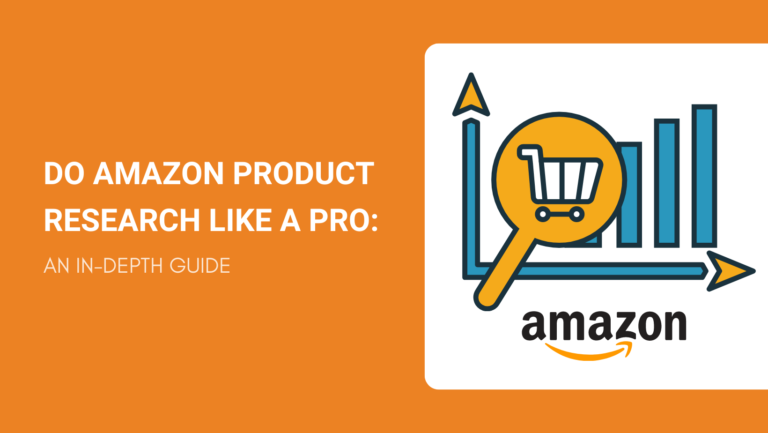One of the most challenging parts of selling on Amazon is finding profitable products to sell. So, learning how to do Amazon product research should be a key skill for every Amazon seller.
However, Amazon product analysis can seem very complex and daunting, especially if you don’t know where to start.
The Internet has information at your fingertips but is scattered everywhere.
So, with so much information and so many products available, how can you generate potentially profitable ideas?
Let’s jump in and simplify Amazon product research!
What Is Amazon Product Research?
Amazon product research or product analysis is the process of searching and comparing data from marketplaces, product research tools, and historical trends in sales to make an informed decision and find potentially profitable products to sell on Amazon.
In other words, Amazon product research entails analyzing the market demand and finding profitable products – ones you can buy for an affordable price and resell with good profit margins.
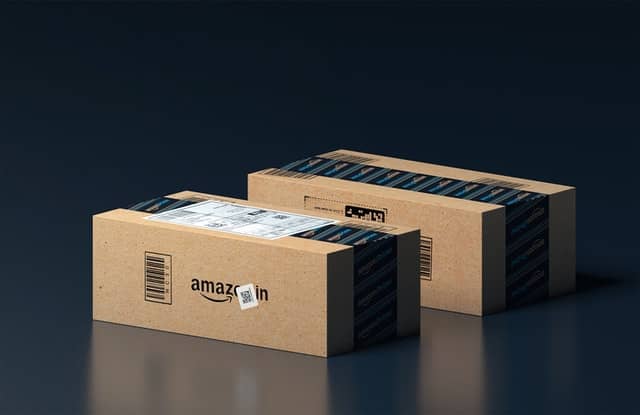
Why Is Product Research Important?
The importance of product research lies in taking the guesswork out of the equation and focusing on data to make informed decisions and increase our sales numbers.
For Amazon sellers, product research is an inevitable and ongoing process, and for a good reason. This process will empower you to understand the market demand and trend projections, and, ultimately, find the most profitable product idea to sell.
Selling what you like and what looks good doesn’t mean everyone will buy into your idea. That’s why we need real data when doing product research, rather than our own subjective opinions.
How to Generate a Product Idea for Amazon?
Now, let’s move on to the main part of this guide and learn how to find potential products to sell on Amazon.
Keyword Research
If you’re an Amazon seller, we recommend using data analysis and keyword research tools like Jungle Scout, Helium 10, or AMZScout to start your Amazon product research.
With tools like these, you can search and select product keywords based on:
- Market trends
- Market size
- Market demand
- Search spike
Usually, product research tools like these will also give you the option to search by products, not just keywords.
For instance, you should be able to filter based on product potential or product maturity and find underserved markets with high demand and search volume. Such products might have a poor average rating, which will clearly show you that there’s still room for improvement.
To reaffirm your decision, you can also compare your results to free keyword analyzers like Google Trends or AnswerThePublic.
Aim for long-tail keywords and ensure that the product you chose has at least 3 related long-tail keywords with solid search volume (at least 50,000 monthly searches on Amazon).
Amazon Best Sellers
Your next step should be to check the Amazon marketplace, starting with the Amazon Best-Seller List. On this page, you can find the most popular product with the highest sales and BSR (Best Sellers Rank) in every product category.
The secret here is to dig deep into the narrower sub-categories to find high-demand/low-competition opportunities.
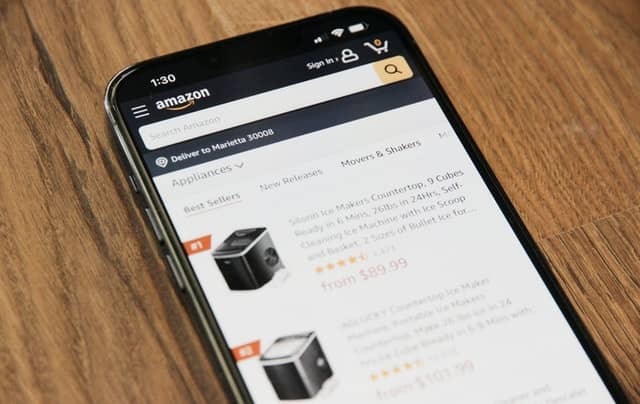
Amazon New Releases
As the name suggests, the Amazon Hot New Releases page will show you the best-selling new and future product releases. The list is updated hourly.
Amazon Movers & Shakers
The Amazon Movers & Shakers are the biggest gainers in sales rank over the last 24 hours. Amazon updates this list hourly for every product category to ensure you always have the latest information.
Pro tip: These sellers are doing something right to move so many sales quickly. So, it’s a good idea to follow them and do a little friendly spy to check their offer, marketing efforts, copy, etc. Remember, just use this for inspiration.
Other Marketplaces
Last but not least, you can check the trending or hot selling products on other marketplaces for inspiration.
You can check B2C websites like:
- AliExpress
- Zaful
- Wish
- Amazon
- eBay
- Etsy
- Walmart
- Target
Besides trending products, marketplaces like these will also allow you to find more related keywords. As a result, you can improve your product listing SEO and discoverability.
Criteria of Amazon Product Research
When finding profitable products to sell on Amazon, there are two key areas of research to focus on – the market and the product.
Here are some checklist questions that will help you establish the criteria of what a good product should look like:
Market-Based Criteria
First, let’s look at market-based criteria for product research. Your goal is to find an answer to the following questions:
How many potential buyers are there?
You should aim for 50,000+ monthly searches for your top 3 long-tail keywords. This will reassure you that there’s a solid demand and search volume.
What does the competitive landscape look like?
We recommend isolating low competition opportunities by ensuring there are at least 2 or 3 products with less than 50 reviews each on the first page of the search results.
Is it a growing, flat, or shrinking market?
Look at past sales and trend forecasts to find growing markets, and opt for evergreen rather than trending or seasonal products. Google Trends is a great tool for reviewing historical data and demand over time.
Are there market barriers to entry?
Check if you or your supplier need any permits or certificates related to the product. Also, check for registered trademarks, brand names, etc. You need to ensure no obstacles to marketing and selling your chosen product.
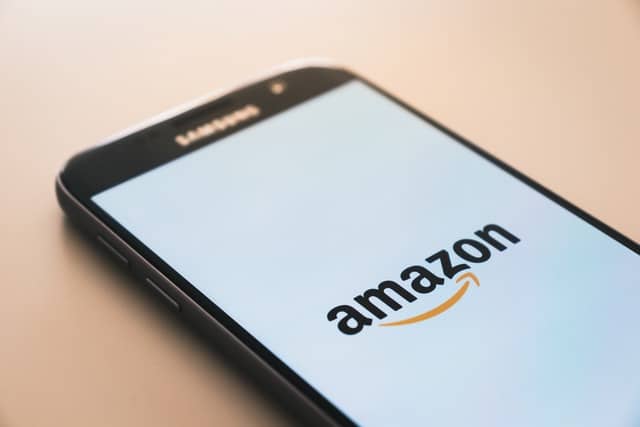
Product-Based Criteria
Next, we will go over your product-based criteria. Here are the main questions to ask:
What’s your potential selling price?
You should aim for products between $10 and $50. If you go lower than that, you won’t be able to cover your expenses.
How much of a profit margin can you make?
The minimum profit margin to aim for is 25%. However, aim for 30% to 50% if possible. That will give you better coverage of your fulfillment costs and still help you profit.
What is your product’s size and weight?
Instead of heavy and oversized items, opt for small and lightweight products to reduce storage and shipping costs.
For instance, instead of traditional furniture, think of selling ready-to-assemble furniture which is compact and takes less space.
Can you make improvements over similar products in the market?
Here, we want you to look for private labeling opportunities where you can upgrade or improve a product feature. The goal should be to develop a superior product that solves the buyer’s pain points.
Of course, retail arbitrage is also an option, but you should know that some of the most successful brands on the marketplace are Amazon private label brands.
How easy is it to source the product?
Is the product available to buy wholesale from China? Is it possible to find manufacturers and buy directly from a China factory?
Sourcing products from trustworthy suppliers is crucial for a successful Amazon FBA business (and any eCommerce business model for that matter).
Are there any restrictions or regulations on your products?
Avoid restricted or prohibited products that might impose legal issues. Furthermore, such products often have advertising restrictions as well, resulting in a limited reach and inability to sell.
Is your product perishable or fragile?
You should avoid perishable or fragile products due to the high risk of damage or spoiling during shipping and storage. This can result in financial losses and customer dissatisfaction.
Is your product with repeat purchases?
Instead of one-time or seasonal products, opt for recurring products that people use daily and need to regularly renew.
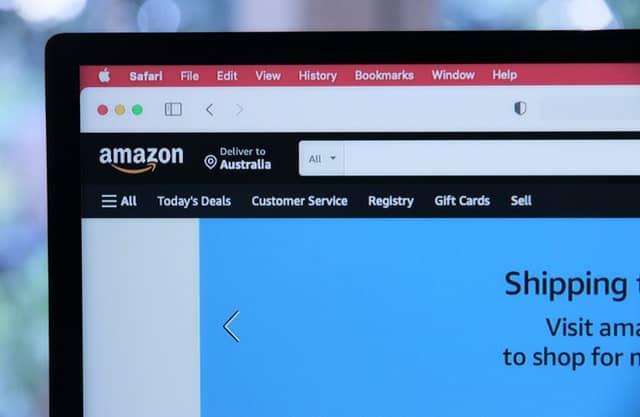
How to Analyze Product Demand?
There are three main ways to analyze product demand:
- Check the keyword search volume
- Look at sales data from product research tools
- A good BSR rank in the main product categories
Keyword Search Volume
Keyword research is a big part of analyzing product demand. The most important information you need is the keyword search volume. A high search volume indicates high demand. However, note that it can also indicate high competition.
Ideally, you should look for products with high search volume and high demand yet low competition. This is when you know you’ve struck gold.
Opt for long-tail keywords when doing your product research. Ensure that the product you’ve chosen has more long-tail keyword variations and opportunities.
Ideally, the 3 main keywords should each generate over 50,000 Amazon monthly searches.
Sales Data from Product Research Tools
Next, you should gather and analyze the data you collected with your product research tools.
These tools should show you the market size, search volume, trends, market potential, and other sales data to help you make an informed decision.
For instance, Helium 10 will show you the estimated revenue for an Amazon product, giving you a rough idea of their sales numbers.
Sales data is crucial for figuring out whether a market is saturated or not.
BSR Rank in the Main Categories
BSR stands for Best-Sellers Rank, and this is another pointer to look at when analyzing product demand. In short, BSR measures how well a specific product sells compared to others in the same product category on Amazon. The lower the BSR number, the more sales.
For instance, a product with a #1 rank is the best-selling product in that category, a product with a BSR #2 is the second best-selling one in the category, etc. BSR goes from 1 to 1 million.
Note that if a product is listed in more than one category, it can have different BSR ranks in each category. For instance, a specific knife set might have #35 BSR in the “Kitchen & Dining” product category, but #460 BSR in the “Home & Kitchen” category.
Ideally, the product you choose should rank well in its main category.

How to Analyze Competition on Amazon?
Your biggest competitors are other Amazon sellers targeting the same audience and keyword.
Logically, you want to look at the ones that pop up on the first page of the Amazon search results for your keyword. Those are the ones whose place you’re trying to take.
So, below, we will look at some data you can gather by looking at “first-page” results:
Sales Percentages of Top Sellers in the Category
Following your competitors’ pricing and sales will give you an idea of the demand and profitability of a product. You can track their sales by checking their BSR number or using product research and tracking tools like Jungle Scout or similar.
Usually, these tools will show you your competition’s sales numbers, revenue, BSR rank, and more.
Number of Big Brands on the First Page
Did any big brands pop up on the first page for your main keyword? Or maybe the product you want to sell is also sold under the Amazon brand itself (such as Amazon Basics)?
That’s bad news since big brands can steamroll the competition. The more big brands you have to share your audience with, the fewer sales you can expect.
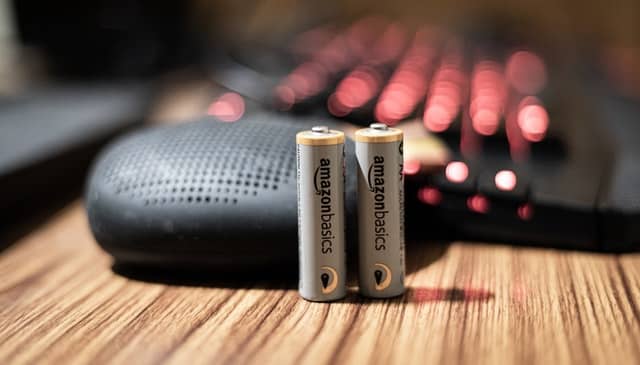
Reviews on the First Page
You should aim for a product that has at least 2 to 3 product listings with less than 50 reviews on the first page of the search results for its keyword. This shows you that the niche isn’t completely saturated with sellers.
The next thing you want to do is read the customer reviews of similar products that pop up. More specifically, look at the 3 and 4-star reviews. Those can give you great insights and show you missing features or properties that the buyers disliked.
By looking at these unmet customer needs, you’ll find a market gap for your niche. Now, you know how to upgrade, improve, and private label a better product.
Publish Dates of the Product Listings on the First Page
Some suppliers would place their release date when they first listed the product on Amazon. In this scenario, you should check the release dates of all similar products on the first page.
A recent release or publication date yet solid sales numbers and BSR shows you that it’s relatively easy to enter the market.
Profit Margins of Products on the First Page
Last but not least, you want to look at the product price and profit margins of the best-selling products on the first page. Their profit margin will give you an idea of what you can expect to earn while selling your product. Aim for at least a 25% profit margin, although 30% – 50% would be better.
However, don’t forget to add things like storage and shipping costs to your calculations. These expenses can give you false profit projections if you forget to include them.
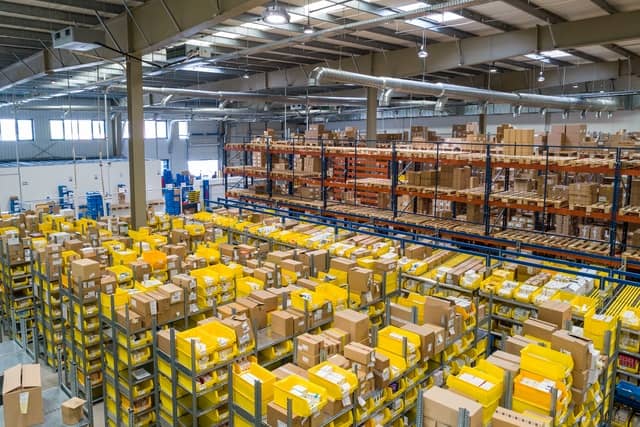
How to Analyze Market Trends?
When you’re analyzing market trends, you want to know if it’s a saturated market full of top-sellers and difficult to enter, or is it a new, trending niche that still allows new sellers to enter.
Market trends change quickly, and it can be difficult to figure out how a trend will move.
Historical data like the one on Google Trends can help you realize if it’s a passing trend or a product with consistent demand.
Don’t forget that you can also use tools like Jungle Scout, Helium 10, or SellerApp to analyze market trends for Amazon.
How to Know the Market Barriers to Entry?
Some of the most significant barriers to entering a market are:
Patents and Registered Trademarks
Needless to say, don’t resell patented or registered trademark products without permission.
If you’re interested in selling brand products, the best is to upgrade and brand a generic product, resulting in a superior, branded product that brings you higher profits.
Product Certification Requirements
A rule of thumb – everything that goes “on” or “in” your body will likely need certificates, permits, or even FDA approval.
These are typically products like skincare, food, snacks, supplements, drinks, etc.
What Selling Price Range Should You Choose?
Choose products priced between $10 and $50. Less than that, and you won’t be able to cover your fulfillment costs. More than that, making a sale might take a lot of convincing.
Ideally, aim for a profit margin of at least 25%, preferably 30% to 50%.
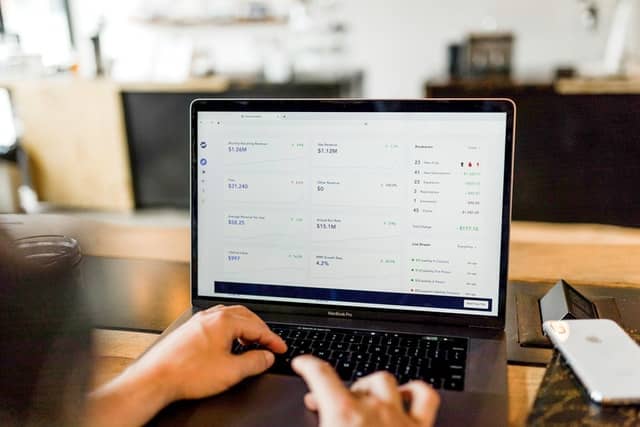
How to Calculate Your Profits?
First and most important, you need to make a difference between revenue and profit. The sales revenue is the income you make from sales. But, revenue doesn’t consider your expenses. So, what you should care about are the profits.
Profit is the revenue minus other expenses, such as:
- Product sourcing
- Shipping cost
- FBA fees
- Advertising costs
- Storage and warehousing
Here’s a handy guide to Amazon FBA costs to help you further.
How to Determine Your Product’s Size and Weight?
Here’s how to measure your product’s size and weight step by step:
Step 1: Take Product Measures
This is how you measure a fully packaged product in inches:
- Longest side (length) – the dimensions of the longest side of the item
- Median side (width) – the dimensions of the side that is neither the longest nor the shortest
- Shortest side (height) – the dimensions of the shortest side of the item
- Girth – median side plus shortest side, multiplied by 2
- Girth plus length – the girth plus the longest side
Step 2: Calculate Product Volume
Next, use this equation to calculate the product volume in inches:
product volume = longest side x median side x shortest side
Step 3: Calculate Storage Fees
Lastly, you need to convert the product volume we calculated above from inches to cubic feet in order to find out the storage fee.
To do this, divide the product volume in inches by 1,728.
*Note that 1,728 is the volume of 12 cubic inches (12 x 12 x 12 inches = 1,728).
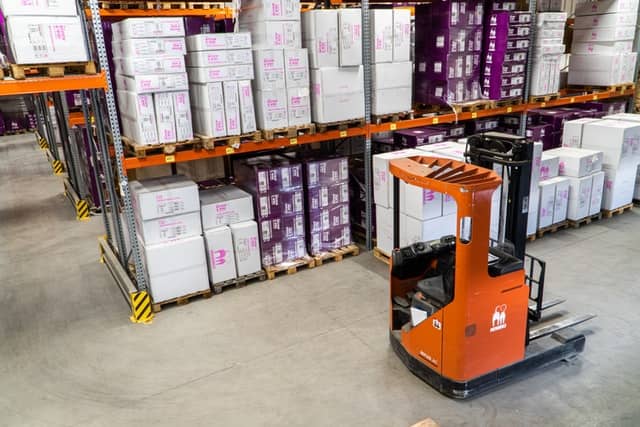
Step 4: Calculate Dimensional Weight
The dimensional weight is equal to the product volume (length x width x height) divided by 139.
dimensional weight = (length x width x height) / 139
Step 5: Calculate Shipping Weight
Shipping weight is based on either the dimensional weight or the unit weight (weight of the packaged item), depending on which one is higher.
How to Analyze Reviews for Product Improvement?
If you’re interested in private labeling opportunities, the best thing you could do is find products with room for improvement. And, the best way to do this is by analyzing your competitors’ product reviews.
Let’s see how to do this:
Step 1: Search Your Keyword
To clarify, let’s assume you’re interested in selling car phone holders.
So, first, you go to Amazon and search for “car phone holder” or a similar term (your main keyword).
The search results you’ll get represent your biggest competitors.
Step 2: Read the Reviews of First-Page Products
Go through all the products on the first and maybe the second page from your Amazon search.
We recommend checking the 3 and 4-star reviews because they’re often realistic and not written out of spite but real problems with the product.
Step 3: Note Down All Product Flaws
Now, read all these reviews and write down all the downfalls and product flaws that the buyers complained about. Often, they will even give you suggestions on what they wished the product did or looked like. This is all gold for your product research.
Step 4: Use Tools to Scrape Keywords (optional)
Some product research and data analysis tools, such as Helium 10, give you the option to scrape Amazon reviews based on keyword triggers. However, this is an optional step.
We still recommend manually reading through reviews, at least the ones on the first page of your Amazon search results.
How to Find Suppliers for Amazon Products?
Here are the four main ways to find suppliers for products for your Amazon FBA or FBM business:
B2B Marketplaces
B2B marketplaces are platforms like Alibaba, 1688, DHgate, etc., where you can find bulk suppliers for your products.
For instance, many suppliers on Alibaba are actual factories in China, so they can give you a better deal for bulk orders and help you customize your product line.
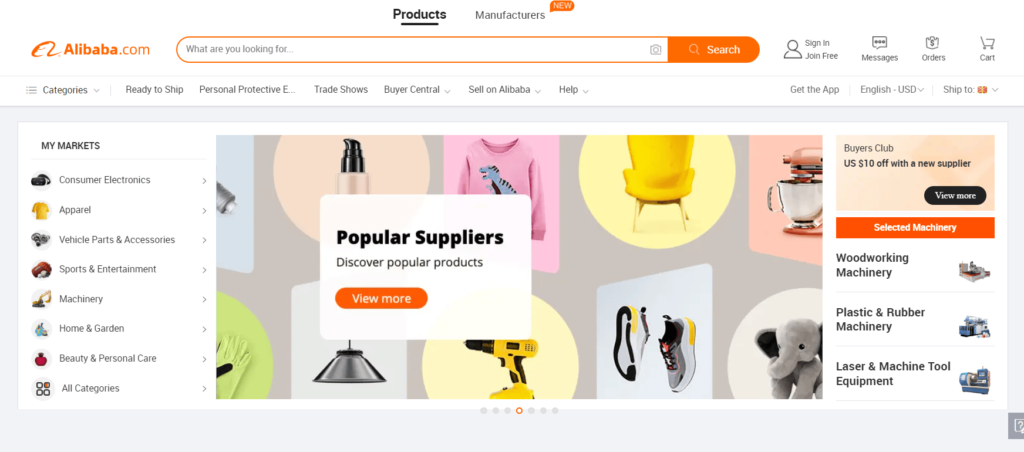
Product Sourcing Agents
Your next option is working with product sourcing agents. We recommend sticking to full-service agents like NicheSources that can help you with ODM, OEM, and private labeling services. Additionally, if you use FBA, ensure your supplier agrees to ship to Amazon warehouses.
Google Research
Another way to find suppliers for Amazon products is to simply Google. You can search for “[product] suppliers for Amazon FBA” or “best Amazon FBA suppliers for [product]”.
Then, check the first and second page of the Google results and see if you find a supplier that fits your needs.
Visiting China Trade Shows
Last but not least, you could visit China directly and go to trade shows or markets where they sell the type of product you’re looking for.
Usually, each product category has its own factory hub area in China. Google to find which China manufacturing cities to visit.
Amazon Product Policy
Amazon has a strict product policy, rules, and regulations sellers need to respect:
- Check out the Amazon list of restricted products
- Check out the Amazon FBA product restrictions
- Note that certain product categories need pre-approval from Amazon before product listing
- There are additional requirements if your products need FDA approval
Adhering to these product policies is crucial for long-term success. And, lastly, don’t forget to check different countries’ laws and regulations if you’re selling internationally.
Why Should You Avoid Perishable and Fragile Products?
Perishable and fragile products can easily break and spoil. Often, they need special product packaging or even special transport conditions such as climate-controlled cooling or freezing. Naturally, this adds up to your shipping cost.
Additionally, storing perishable goods can be costly, and you also risk each time you fulfill orders and deliver to your end customers.

Why Should You Choose A Product with Repeat Purchases?
A product with repeat or recurring purchases can be a stable source of income for an Amazon seller. The perfect example of repeat purchases is the subscription box business.
For instance, take a look at the Dollar Shave Club. They took something as simple as razors which are readily available at every shop and created a subscription service.
Of course, they knew that you could find razors everywhere. So, why buy from them? Simple, because you subscribe once and you use their services ongoing. They will never forget to replenish your razors. And, you won’t have to go grocery shopping and lose time.
This is a great idea of how thinking outside the box can help you create a business idea from seemingly everyday products.
To boost your average cart value even further, add complementary products to your palette. These are products that go well with the first product, improve it, make it work better, or are similar to it. In any case, great for up-selling and cross-selling at checkout.
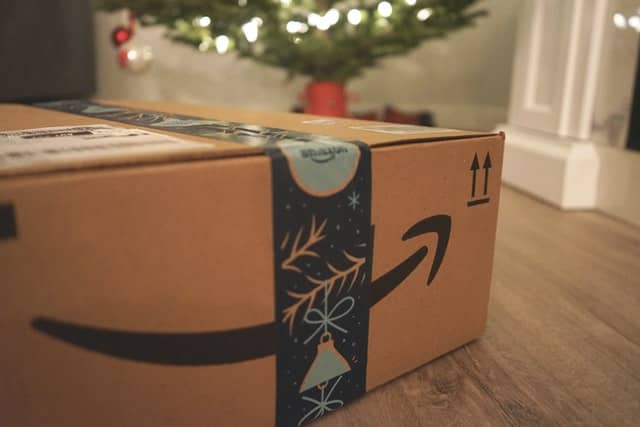
FAQs about Amazon Product Research
In this last section, we want to address all the frequently asked questions on the subject of doing Amazon product research.
Which Amazon Product Research Tool Is the Best?
There are many great Amazon product research tools out there, such as Jungle Scout, Helium 10, AMZScout, SellerApp, Unicorn Smasher, ZonGuru, AMZBase, and others.
How Can You Tell How Well a Product Sells on Amazon?
The best indicator of how well a product sells on Amazon is its BSR (Best-Sellers Rank). Every product on Amazon that has had at least one sale will have a BSR number. Ranks from #1 to #3 represent products with high sales.
How to Check Product Categories on Amazon?
To identify a product category, try the following approaches:
- Add each ASIN to your catalog to see its category (but don’t forget to delete ASINs that you won’t really stock and sell)
- Use the Seller Central’s Product Classifier if you have a list of products that you want to stock.
- Use tools to generate product information and automate this process
Amazon product categories matter a lot. Why? Because BSR shows the rank according to the sales in different product categories.
For instance, the same women’s shorts could be #78 in the broad product category “Clothing, Shoes, & Jewelry”. But, the same shorts could be #3 in “Women’s Athletic Shorts” and even #1 in “Women’s Running Shorts”.
So, it’s not just the isolated BSR that matters, but rather the combination of BSR and the right product category.
When listing your product, if you don’t see a fitting category, it might be in a restricted product category that needs approval.
What Is a Good Amazon Sales Rank?
Generally speaking, you should aim that your products have at least #5000 BSR in their main categories (and less in their specific sub-categories).
When it comes to the Amazon BSR (best sellers rank), the lower the number, the better the sales. The sales rank goes from #1 (the best-seller in the product category) to #1M.
Where to Find a Reliable Supplier?
If you’re looking for a supplier, you could buy from Alibaba and ship to Amazon FBA warehouses. On Alibaba, you can find factories and manufacturers that can also help you with product development or private labeling.
Alternatively, you could collaborate with a full-service sourcing agent that can help you find products to sell on Amazon.
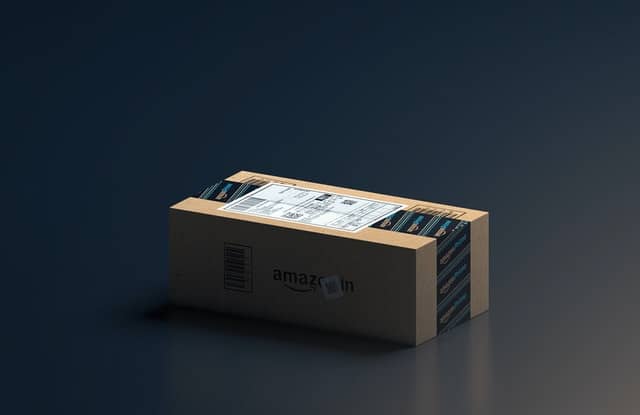
Key Takeaways
At this point, if your Amazon product research was successful, you should know the following information:
- The demand and market size for your product
- Your main competitors and the size of your competition
- Product trends and search peaks or declines over time
- The cost of sourcing your chosen product
- The potential profit margin you can set and the profits you can make
- Opportunities to improve product features or develop a superior product
If our guide wasn’t enough to help you separate from the herd, get in touch. We regularly source for Amazon sellers from China and ship to Amazon FBA warehouses.
Plus, we can help you with product development and design a superior product based on your Amazon product research data. Get a free quote today!
